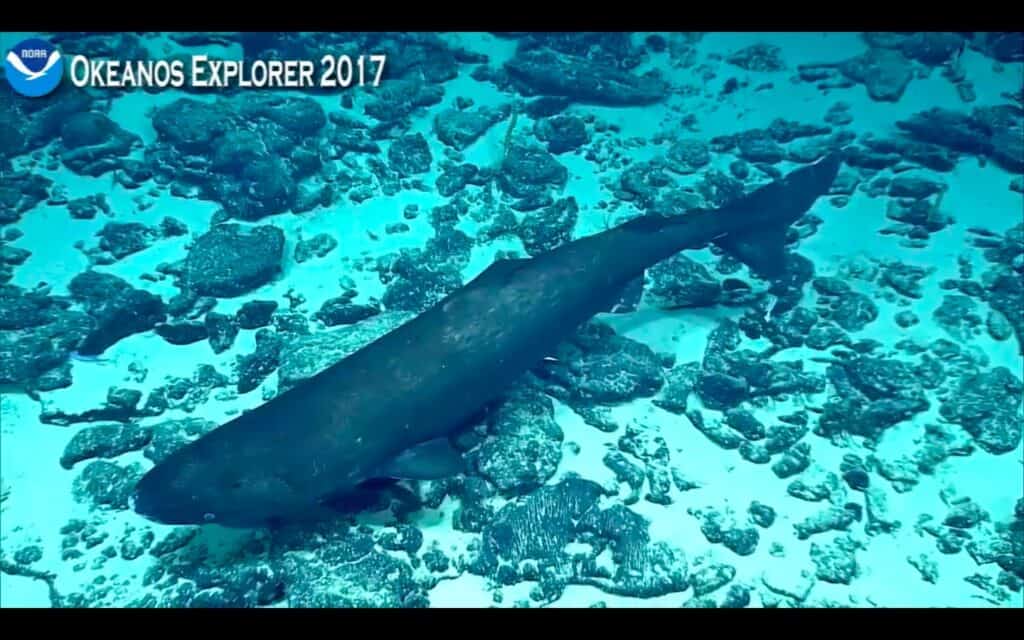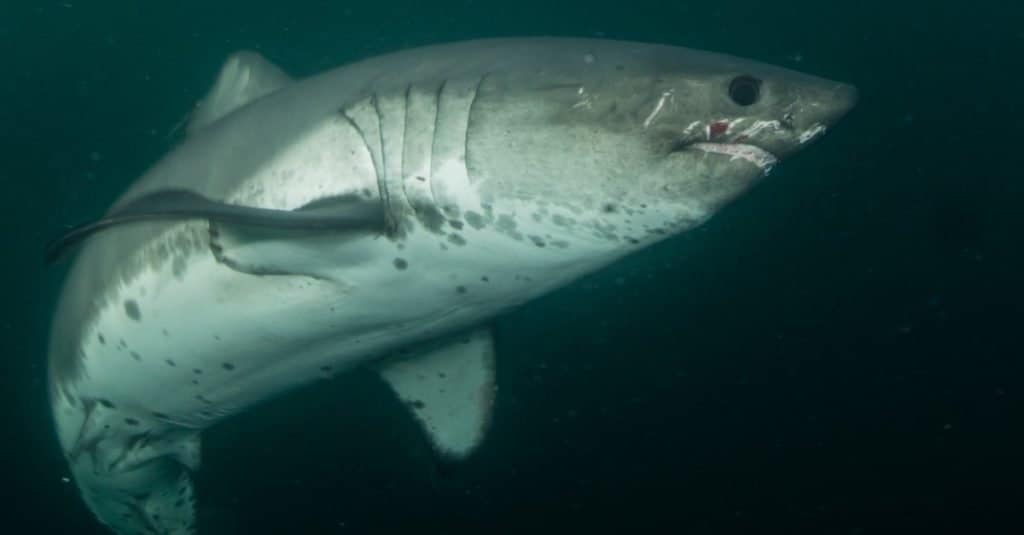There are over 500 species of sharks on the planet swimming in every one of the world’s five oceans. Sharks live in habitats ranging from shallow waters to the deepest seas. Most species of sharks are cold-blooded and can only survive in moderate temperatures. However, there are a few species of sharks that can live where the temperatures are frigid.
Read on to discover just how cold of water sharks can survive in.
How Cold of Water Sharks Can Survive In?
The coldest ocean sharks live in is the Arctic Ocean where water temperatures can range between 29 and 59 degrees Fahrenheit. Although most sharks prefer temperate climates, some sharks have adapted special features that help them survive, and even thrive, in frigid ocean waters. These sharks are fascinating creatures and live at such deep depths that some are rarely encountered by humans.
The only ocean in the world you won’t find sharks is the Southern Ocean around Antarctica. Though some sharks can live in cold waters, none can survive the icy temps off the shores of Antarctica.
Endothermic vs Ectothermic Sharks
Most sharks are ectothermic, meaning their body temperature matches their environment. These shark species prefer moderate climates and couldn’t survive in cold water.
However, out of the many species of sharks in the world, five are warm-blooded, (endothermic). Unlike cold-blooded animals, endothermic sharks can raise their blood temperature higher than the water temperature. These warm-blooded sharks can survive in frigid ocean waters, with habitats as far north as the Arctic Circle.
Sharks That Like Cold Water

Great white sharks
, the world’s largest predator fish, can live in both warm and cold water.
©iStock.com/Martin Heyn
The five endothermic sharks that can swim in cold waters are in the mackerel family (Lamnidae) and include:
- Great White Shark
- Shortfin Mako
- Longfin Mako
- Porbeagle
- Salmon Shark
Additionally, there are a few ectothermic shark species that have special adaptations to help them tolerate cold water, including:
- Blue Shark
- Spiny Dogfish
- Greenland Shark
- Pacific Sleeper Shark
- Basking Shark
- Frilled Shark
The Rare Deep-Sea Sharks That Love the Cold
Some sharks, like the blue shark, can tolerate cold temperatures for short periods. Blue sharks will dive to depths of over 1,300 feet to catch their meal before they rise back to the warmer waters on the surface. However, some sharks prefer the cold depths of the ocean and live in cold, deep water year-round. Let’s meet some of the sharks that prefer the cold.
Frilled Shark

Few photos exist of the
frilled shark
due to its deep water habitat. Seen here is a 3D-rendered image.
©iStock.com/3dsam79
The prehistoric frilled shark can be found at the bottom of the Mariana Trench. Because no sunlight ever reaches the depths of the trench, temperatures hover around 34 to 39 degrees Fahrenheit year-round. The frilled shark, sometimes referred to as a “living fossil,” is an ancient species, having survived for 100 million years.
Greenland Shark

Greenland sharks live as long as 400 years.
©Dotted Yeti/Shutterstock.com
The Greenland shark moves extremely slow for a shark. These sharks have incredibly long lives, living as long as 400 years. To survive the cold water, Greenland sharks make a kind of anti-freeze in their bodies to keep them from freezing. This mysterious shark is not often encountered by humans and the first photograph of a Greenland shark didn’t happen until 1995.
Pacific Sleeper Shark

Pacific sleeper sharks live in the freezing waters of the Arctic Ocean.
©Public Domain – License
These sharks are highly similar to Greenland sharks and also have a type of anti-freeze system in their bodies to prevent them from freezing. The sleeper shark must rely on its sense of smell to find its prey. The sharks’ eyes are colonized by a parasite that renders them nearly blind.
Basking Shark

Basking sharks may look threatening, but they are gentle creatures that only eat plankton.
©Martin Prochazkacz/Shutterstock.com
The basking shark is another mysterious deep-sea creature that can grow up to 35 feet in length. Despite their huge size and wide jaws, basking sharks are harmless and only feast on plankton. They prefer to live in waters that are around 46 to 60 degrees Fahrenheit.
Salmon Shark

The salmon shark is a fast-swimming, large predator that can be found swimming in the cold waters of the North Pacific Ocean.
©Warren Metcalf/Shutterstock.com
These endothermic sharks have incredible abilities to keep warm in cold waters. Scientists have found that the salmon shark can raise their body temperature to 24.5 degrees Fahrenheit above the water temperature. This gives them the ability to hunt for their prey at very high speeds in short bursts.
Advantages of Living in Cold Water
Sharks that have adapted to the cold water of the Arctic and other oceans have the benefit of reduced competition in hunting their prey in the depths. Whether they live full-time in the cold or can tolerate it for short periods as they chase after their food, cold-water sharks enjoy an abundance of resources with very little competition.
The photo featured at the top of this post is © murattellioglu/Shutterstock.com
Thank you for reading! Have some feedback for us? Contact the AZ Animals editorial team.







